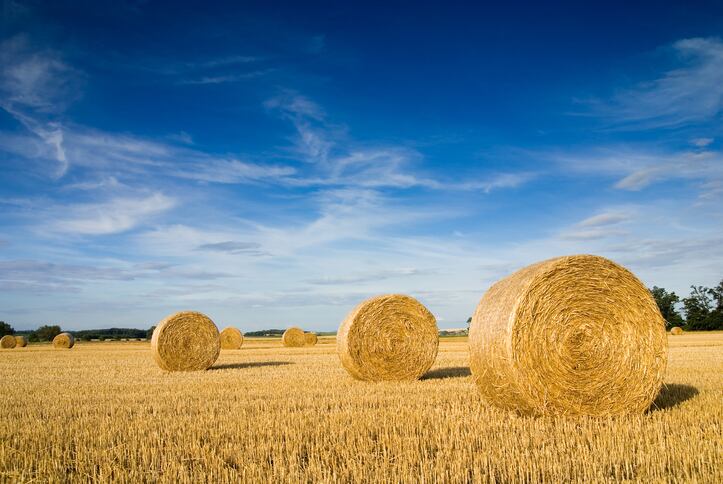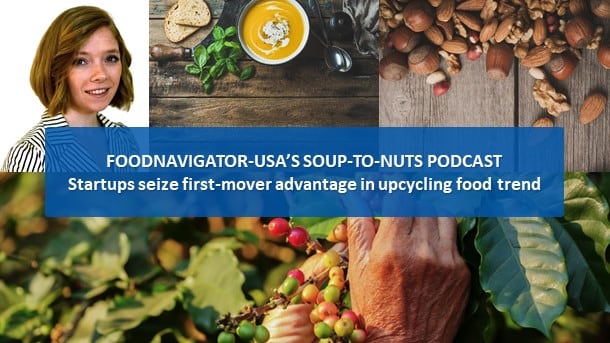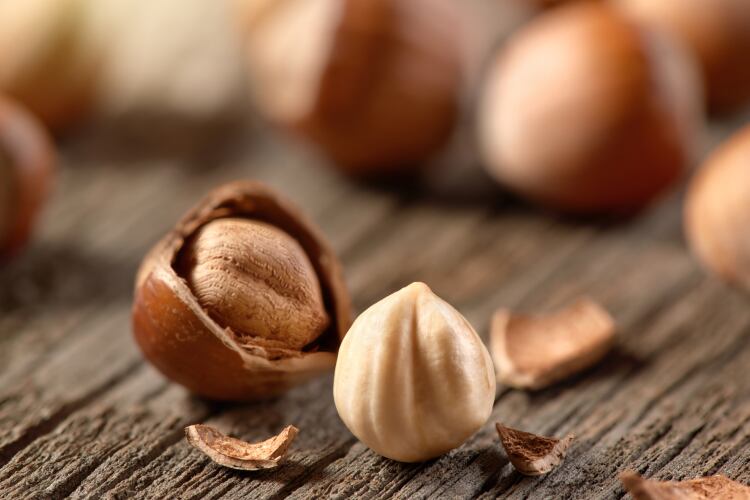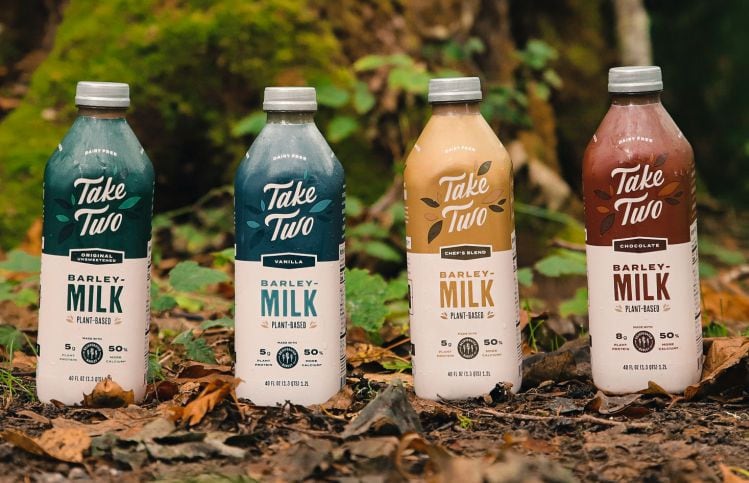“Arabinoxylan is present in things like psyllium husks, but no one has been able to isolate it on a cost-effective basis as it’s attached to other things, which means you don’t get the specific benefits,” said Rich Troyer, CEO at Comet Bio, which can upcycled feedstocks from brewer’s spent grains to wheat straw and other crop leftovers as its source materials to make dietary fibers and sweeteners.
“No one else that we are aware of is making an arabinoxylan dietary fiber product [on an industrial scale], although people have been looking at it for a long time,” he told FoodNavigator-USA.
“We call it the Cadillac of fibers, and there’s a lot of publicly available clinical data that we’ve used to support structure function claims, but we also conducted our own clinical trial.* This was primarily to show safety and digestive tolerability, but as a secondary endpoint, we studied microbiome impacts and saw a nice selective increase in beneficial bacteria.”
The company – which is based in Canada and has a US headquarters in Chicago and demo-scale facilities in Italy - is “now producing arabinoxylan in small batch commercial scale [in Italy], in order to get product into customers’ hands," said Troyer. "And we now have access to a large commercial facility in a wheat-growing region in Europe where we can produce thousands of tons.”
“That should be fully up and running in the second quarter of next year,” added Troyer, who says the ingredient (brand name Arrabina) is self-determined GRAS [with an FDA submission likely down the road]. In Canada we filed for a novel food application, and we’ll do something similar in Europe.”
'We’re seeing prebiotic effects with only 3g a day'
So what’s the size of the prize?
The market opportunity is significant, claimed Troyer, who said it’s taken a while, but dietary fiber – especially the prebiotic variety (which stimulates the growth of good bacteria in the gut), is hot right now, with a growing number of companies from Olipop to Luna bars now proactively using the term ‘prebiotic fiber’ on packaging to appeal to Millennials, rather than more traditional messaging around ‘regularity’ or ‘roughage.’

Arabinoxylan – a naturally-occurring, clean-label fiber that Comet Bio extracts from upcycled Non-GMO feedstocks - has some distinct advantages in the space given its high-tolerability (you can eat a lot without experiencing digestive issues) and high-potency (you don’t need much for prebiotic effects), providing formulators with a “wide therapeutic window,” he said.
“In our clinical trial, we saw no difference vs placebo with 12g/day, so I wish we had tested a higher amount. And we’re seeing prebiotic effects with only 3g a day, so that therapeutic index or window is really high."
He added: "The challenge with some other prebiotic fibers such as inulin [chicory root fiber] is that you need 5g to get a prebiotic effect, but if you take 7g you may get a stomachache [although suppliers have challenged this assertion], so there’s a narrow therapeutic window, whereas we have a really wide one.”
On a more practical level, Arrabina’s low viscosity means it will not gel or impact texture when added as a supplement to protein powders or as a fiber boost for nutrition bars, baked goods, and drinks, he said.
What are prebiotics?
The definition of 'prebiotic' agreed by the International Scientific Association for Probiotics and Prebiotics (ISAPP) in 2017 is: “A substrate that is selectively utilized by host microorganisms conferring a health benefit.”
'There are interesting things we can do to adjust the process to get to different grades and different types of dietary fiber'
So how does Comet Bio extract arabinoxylan (classified by the FDA as a dietary fiber), which it can procure from a variety of sources of hemicellulose, from spent brewer’s grain to wheat stalks?
First, steam and pressure are used to “open up the biomass,” while water is then used to “rinse out the arabinoxylan,” followed by purification and filtration steps “to get to a really pure dry arabinoxylan powder,” said Troyer, who says the company has a suite of patents around the process and product composition, coupled with years of know-how.
“We know how to adjust the operating conditions to get to the exact product specifications that we want. There is also a molecular weight range within arabinoxylan, that you can fine tune [to deliver different health benefits]. So there are interesting things we can do to adjust the process to get to different grades and different types of dietary fiber and different specs of arabinoxylan.
“I think it’s a huge opportunity.”
Building a circular economy
To make upcycling work on an industrial scale, especially for side streams that need immediate on-site processing (spent grain, coffee fruit), the right infrastructure needs to be in place, however.
So what kinds of business models and partnerships does Troyer see emerging as we try and build a more circular economy?
“It depends on feedstocks and geography," he said. "Saved grains will be available from other folks’ manufacturing facilities, so that’s a case where there might be great partnership/integration opportunities." Notably, Comet Bio is partnering with AB InBev subsidiary EverGrain, which has been developing some high-value barley protein and fiber ingredients of its own from spent grains, he said.
‘We’ve done piloting and demo scale work with EverGrain over the last year with really good results. The co-products that come out of plant-based protein manufacturing are excellent feedstocks for our product.”
If your feedstock is something like wheat straw that can be bought on the open market and easily stored, then there’s more flexibility, he said. “Soy hulls are also an amazing feedstock for our process; there are a ton of feedstocks that we can explore.”
'Every single food company we’re talking to is looking to reduce food system waste'
So does upcycling factor into potential partners’ purchasing decisions, or is it just a nice-to-have they can mention in their CSR reports?
“For consumers, the upcycling aspect is kind of a nice to have,” said Troyer, noting that shoppers say they want to buy more upcycled foods, although it’s hard to determine at this stage whether they would pay a price premium.
But for food manufacturers’ procurement teams, he said, “it’s definitely up there in the hierarchy” of purchasing motivations.
“Every single food company we’re talking to is looking to reduce food system waste, so that’s incredibly important. It’s core to everybody’s strategy.”
*The study has been submitted for peer review and Comet Bio is hoping it will be published by the spring. Separately, several clinical trials have documented the effects of Arabinoxylan (AX) on the selective growth of bifidobacteria in the gut (Windley et al. 2015, Cloetens et al. 2010, Francois et al. 2014, Maki et al. 2012, Walton et al. 2012, Damen et al. 2012, Kjølbæk et al. 2019).
Several of the trials also reported altered fermentation in the colon, including reduction of protein fermentation (Windley et al. 2015, Francois et al. 2014), reduced urinary p-cresol excretion14) and an increase in short-chain fatty acids (SCFA) in the gut which is a marker of bacterial fermentation (Francois et al. 2014, Walton et al. 2012, Damen et al. 2012, Salden et al. 2018).
Dextrose 63DE from wheat straw: Just as sweet, with 20% fewer calories
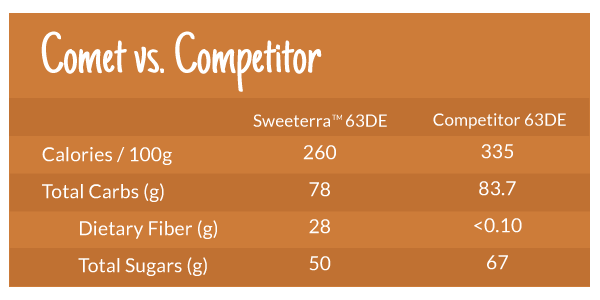
Comet Bio’s Sweeterra 63DE syrup – which can be extracted from a co-product of its arabinoxylan production process - has the same sweetness, mouthfeel and performance as traditional syrups, but 20% fewer calories, reduced sugar and added fiber, says Rich Troyer, who is looking to add dextrose production capacity at the firm’s European plant.
“We take out hemicellulose for arabinoxylan production, and then we separate out the lignin and we have a pure cellulose stream and we treat that enzymatically to get to dextrose.
“Our product is functionally identical to 63DE you’d buy from an ADM or a Cargill, but it’s from a non-GMO, upcycled source [wheat straw], and it has a 65% reduction in greenhouse gas emissions, so you can reduce your carbon intensity. It’s a massive market opportunity.”
He adds: “It’s indistinguishable [from traditional syrups] in all the applications we’ve used it in, from breads and muffins to cookies, bars and fruit fillings.”
Interested in upcycling?

Rich Troyer will be joining Greg Belt from EverGrain and Tony Milikin from AB InBev in a session on upcycling moderated by FoodNavigator-USA at the virtual Future Food Tech summit this week. CLICK HERE for details.

